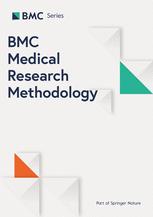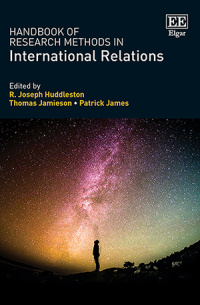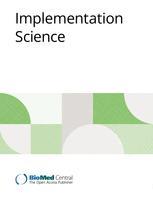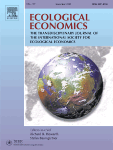- Apr 2023: Article on CORA and LOGIGRAM software published in Journal of Open Source Software
 Combinational Regularity Analysis (CORA) is a new member of the family of configurational comparative methods (CCMs). CORA generalizes the capabilities of existing CCMs. By means of Boolean optimization algorithms for multi-output data imported from electrical engineering, CORA can infer INUS structures that include complex conjunctive effects. The CORA package is an open-source Python tool, hosted on GitHub and deployed on the Google Colab platform, with which such structures can be identified. The visualization of INUS structures in CORA is achieved by the LOGIGRAM package, which provides functionality to CORA for producing logic diagrams. The article is available open-access via this link.
Combinational Regularity Analysis (CORA) is a new member of the family of configurational comparative methods (CCMs). CORA generalizes the capabilities of existing CCMs. By means of Boolean optimization algorithms for multi-output data imported from electrical engineering, CORA can infer INUS structures that include complex conjunctive effects. The CORA package is an open-source Python tool, hosted on GitHub and deployed on the Google Colab platform, with which such structures can be identified. The visualization of INUS structures in CORA is achieved by the LOGIGRAM package, which provides functionality to CORA for producing logic diagrams. The article is available open-access via this link.
- Mar 2023: Rejoinder to Duşa and Marx published in Field Methods
 We thank Adrian Duşa and Axel Marx for their comment on our evaluation of Marx and Duşa (2011). Such exchanges are indispensable for developing a full understanding of many QCA procedures that have long remained unquestioned. While we welcome this exchange, we also demonstrate why Duşa and Marx’s comment once more underlines the need for more reflections. Instead of taking issue with the core part of Thiem and Mkrtchyan (2023), Duşa and Marx focus on (1) our failure to propose an enhancement of their benchmarks, (2) our use of constants in QCA, (3) our neglect of logical remainders, and (4) our reanalysis of an applied study. We address each of these points. The article is available open-access via this link.
We thank Adrian Duşa and Axel Marx for their comment on our evaluation of Marx and Duşa (2011). Such exchanges are indispensable for developing a full understanding of many QCA procedures that have long remained unquestioned. While we welcome this exchange, we also demonstrate why Duşa and Marx’s comment once more underlines the need for more reflections. Instead of taking issue with the core part of Thiem and Mkrtchyan (2023), Duşa and Marx focus on (1) our failure to propose an enhancement of their benchmarks, (2) our use of constants in QCA, (3) our neglect of logical remainders, and (4) our reanalysis of an applied study. We address each of these points. The article is available open-access via this link.
- Mar 2023: Article on model specification in QCA published in Field Methods
 Qualitative Comparative Analysis (QCA) is an empirical research method that has gained some popularity in the social sciences. At the same time, the literature has long been convinced that QCA fails in recognizing real data beyond a certain case-to-factor ratio. To reduce that risk, some authors have proposed benchmark tables that put a limit on the number of exogenous factors given a certain number of cases. We demonstrate that these benchmarks induce more fallacious inferences than they prevent. For valid causal inference, researchers are better off relying on the current state of knowledge in their respective fields. The article is available open-access via this link.
Qualitative Comparative Analysis (QCA) is an empirical research method that has gained some popularity in the social sciences. At the same time, the literature has long been convinced that QCA fails in recognizing real data beyond a certain case-to-factor ratio. To reduce that risk, some authors have proposed benchmark tables that put a limit on the number of exogenous factors given a certain number of cases. We demonstrate that these benchmarks induce more fallacious inferences than they prevent. For valid causal inference, researchers are better off relying on the current state of knowledge in their respective fields. The article is available open-access via this link.
- Feb 2023: Article on logic diagrams published in Nature Reviews
 Logic diagrams were originally developed at the crossroads of analytical philosophy and electrical engineering as visual representations of Boolean-algebraic functions, primarily those describing switching circuits. However, their utility and applicability extend far beyond the technical sciences. Here, we argue that natural and social scientists alike should consider using logic diagrams in their research. Especially in the context of causal arguments that involve necessary or sufficient conditions, logic diagrams represent a perfect fit. The article is available open-access via this link.
Logic diagrams were originally developed at the crossroads of analytical philosophy and electrical engineering as visual representations of Boolean-algebraic functions, primarily those describing switching circuits. However, their utility and applicability extend far beyond the technical sciences. Here, we argue that natural and social scientists alike should consider using logic diagrams in their research. Especially in the context of causal arguments that involve necessary or sufficient conditions, logic diagrams represent a perfect fit. The article is available open-access via this link.
- Feb 2023: Article on multi-value logic in configurational causal inference published in IEEE Access
 The main purpose of logic optimization lies in architecting highly integrated switching circuits. Thus, it is a topic well covered in electrical engineering. However, while electrical engineering has progressed considerably since the advent of logic optimization in the 1950s, these advancements have not been monitored by social scientists. Nor have social scientists been active in seeking interdisciplinary collaboration. Our objective is to reduce the distance between electrical engineering and the social sciences by presenting Combinational Regularity Analysis (CORA), a new CCM that incorporates multi-value logic in multi-output optimization. The article is available open-access on its website.
The main purpose of logic optimization lies in architecting highly integrated switching circuits. Thus, it is a topic well covered in electrical engineering. However, while electrical engineering has progressed considerably since the advent of logic optimization in the 1950s, these advancements have not been monitored by social scientists. Nor have social scientists been active in seeking interdisciplinary collaboration. Our objective is to reduce the distance between electrical engineering and the social sciences by presenting Combinational Regularity Analysis (CORA), a new CCM that incorporates multi-value logic in multi-output optimization. The article is available open-access on its website.
- Dec 2022: Article on Combinational Regularity Analysis published in BMC Medical Research Methodology
 Modern configurational comparative methods (CCMs) of causal inference, such as Qualitative Comparative Analysis (QCA) and Coincidence Analysis (CNA), have started to make inroads into medical and health research. However, these methods cannot uncover Boolean causal structures that feature complex effects, such as in problems relating to multi-morbidity. We present a new member of the family of CCMs with which complex effects can be analyzed: Combinational Regularity Analysis (CORA). The technical heart of CORA consists of algorithms originally developed in electrical engineering for the analysis of multi-output switching circuits. The article is available open-access on its website.
Modern configurational comparative methods (CCMs) of causal inference, such as Qualitative Comparative Analysis (QCA) and Coincidence Analysis (CNA), have started to make inroads into medical and health research. However, these methods cannot uncover Boolean causal structures that feature complex effects, such as in problems relating to multi-morbidity. We present a new member of the family of CCMs with which complex effects can be analyzed: Combinational Regularity Analysis (CORA). The technical heart of CORA consists of algorithms originally developed in electrical engineering for the analysis of multi-output switching circuits. The article is available open-access on its website.
- Aug 2022: Book chapter on QCA published in Handbook of Research Methods in International Relations
 This chapter is to convince you that QCA and closely related methods of configurational data analysis can add significantly to our knowledge about cause-effect relations. A second goal is to demonstrate the workings of QCA. A third and last goal is to introduce two more recent configurational methods that have solved many of the methodological and technical problems that QCA still remains affected by. A single chapter can never cover all aspects of QCA and related methods in sufficient detail, yet it should provide a good starting point to become acquainted with the foundations of these methods and explore their potential. The chapter is available open-access on its website.
This chapter is to convince you that QCA and closely related methods of configurational data analysis can add significantly to our knowledge about cause-effect relations. A second goal is to demonstrate the workings of QCA. A third and last goal is to introduce two more recent configurational methods that have solved many of the methodological and technical problems that QCA still remains affected by. A single chapter can never cover all aspects of QCA and related methods in sufficient detail, yet it should provide a good starting point to become acquainted with the foundations of these methods and explore their potential. The chapter is available open-access on its website.
- Apr 2022: Article on QCA solution types published in Sociological Methods & Research 51(2)
 Recent research has found the conservative (QCA-CS) and the intermediate solution type (QCA-IS) of QCA to fail fundamental tests of correctness. This problem does not affect the parsimonious solution type (QCA-PS). These findings conflict with conventional wisdom, which has it that QCA-IS is preferable to both QCA-CS and QCA-PS. This article resolves these contradictions. It shows that QCA-CS and QCA-IS systematically supplement empirical data with artificial data, which regularly induce causal fallacies. Researchers who employ QCA-CS or QCA-IS in empirical analyses thus always risk moving further away from the truth rather than closer to it. For more details, visit the article's website.
Recent research has found the conservative (QCA-CS) and the intermediate solution type (QCA-IS) of QCA to fail fundamental tests of correctness. This problem does not affect the parsimonious solution type (QCA-PS). These findings conflict with conventional wisdom, which has it that QCA-IS is preferable to both QCA-CS and QCA-PS. This article resolves these contradictions. It shows that QCA-CS and QCA-IS systematically supplement empirical data with artificial data, which regularly induce causal fallacies. Researchers who employ QCA-CS or QCA-IS in empirical analyses thus always risk moving further away from the truth rather than closer to it. For more details, visit the article's website.
- Dec 2020: CNA introductory article published in Implementation Science
 Implementation of interventions involves many diverse elements working together in interrelated ways, including intervention components, implementation strategies, and features of local context. Given this complexity, implementation researchers may be interested in a new mathematical, cross-case method called Coincidence Analysis (CNA) that has been designed explicitly to support causal inference and identify the possible presence of multiple causal paths to an outcome. CNA can be applied as a standalone method or in conjunction with other approaches and can reveal new empirical findings related to implementation that might otherwise have gone undetected. For details, visit the article's website.
Implementation of interventions involves many diverse elements working together in interrelated ways, including intervention components, implementation strategies, and features of local context. Given this complexity, implementation researchers may be interested in a new mathematical, cross-case method called Coincidence Analysis (CNA) that has been designed explicitly to support causal inference and identify the possible presence of multiple causal paths to an outcome. CNA can be applied as a standalone method or in conjunction with other approaches and can reveal new empirical findings related to implementation that might otherwise have gone undetected. For details, visit the article's website.
- Aug 2020: Applied QCA article published in Ecological Economics
 While increasing sustainable productivity growth in the food and agriculture sector is a common goal of all OECD and G20 countries, an important policy question is how the current set of agricultural policies affects both productivity growth and environmental performance. Empirical evidence on the effects of specific policies on productivity and environmental sustainability is scarce. This paper analyzes the impact of agricultural support policies on sustainable productivity. Our results show that countries achieve high sustainable productivity if livestock density is low and support payments are either not coupled to production or if such payments have environmental constraints attached. For details, visit the article's website.
While increasing sustainable productivity growth in the food and agriculture sector is a common goal of all OECD and G20 countries, an important policy question is how the current set of agricultural policies affects both productivity growth and environmental performance. Empirical evidence on the effects of specific policies on productivity and environmental sustainability is scarce. This paper analyzes the impact of agricultural support policies on sustainable productivity. Our results show that countries achieve high sustainable productivity if livestock density is low and support payments are either not coupled to production or if such payments have environmental constraints attached. For details, visit the article's website.
- April 2020: Methodological evaluation of QCA published in Sociological Methods & Research 49(2)
 To date, hundreds of researchers have employed the method of Qualitative Comparative Analysis (QCA) for the purpose of causal inference. In a series of simulation studies, several authors have recently questioned the correctness of QCA in this connection. These previous attempts at evaluating QCA, however, have been defective. We lay out a set of formal criteria for an adequate evaluation before implementing a battery of inverse-search trials to test how QCA performs in different recovery contexts. Our results indicate that QCA is correct when generating the parsimonious solution type, but incorrect in conjunction with the conservative and the intermediate solution type. For more details, visit the article's website.
To date, hundreds of researchers have employed the method of Qualitative Comparative Analysis (QCA) for the purpose of causal inference. In a series of simulation studies, several authors have recently questioned the correctness of QCA in this connection. These previous attempts at evaluating QCA, however, have been defective. We lay out a set of formal criteria for an adequate evaluation before implementing a battery of inverse-search trials to test how QCA performs in different recovery contexts. Our results indicate that QCA is correct when generating the parsimonious solution type, but incorrect in conjunction with the conservative and the intermediate solution type. For more details, visit the article's website.
 Combinational Regularity Analysis (CORA) is a new member of the family of configurational comparative methods (CCMs). CORA generalizes the capabilities of existing CCMs. By means of Boolean optimization algorithms for multi-output data imported from electrical engineering, CORA can infer INUS structures that include complex conjunctive effects. The CORA package is an open-source Python tool, hosted on GitHub and deployed on the Google Colab platform, with which such structures can be identified. The visualization of INUS structures in CORA is achieved by the LOGIGRAM package, which provides functionality to CORA for producing logic diagrams. The article is available open-access via this link.
Combinational Regularity Analysis (CORA) is a new member of the family of configurational comparative methods (CCMs). CORA generalizes the capabilities of existing CCMs. By means of Boolean optimization algorithms for multi-output data imported from electrical engineering, CORA can infer INUS structures that include complex conjunctive effects. The CORA package is an open-source Python tool, hosted on GitHub and deployed on the Google Colab platform, with which such structures can be identified. The visualization of INUS structures in CORA is achieved by the LOGIGRAM package, which provides functionality to CORA for producing logic diagrams. The article is available open-access via this link. We thank Adrian Duşa and Axel Marx for their comment on our evaluation of Marx and Duşa (2011). Such exchanges are indispensable for developing a full understanding of many QCA procedures that have long remained unquestioned. While we welcome this exchange, we also demonstrate why Duşa and Marx’s comment once more underlines the need for more reflections. Instead of taking issue with the core part of Thiem and Mkrtchyan (2023), Duşa and Marx focus on (1) our failure to propose an enhancement of their benchmarks, (2) our use of constants in QCA, (3) our neglect of logical remainders, and (4) our reanalysis of an applied study. We address each of these points. The article is available open-access via this link.
We thank Adrian Duşa and Axel Marx for their comment on our evaluation of Marx and Duşa (2011). Such exchanges are indispensable for developing a full understanding of many QCA procedures that have long remained unquestioned. While we welcome this exchange, we also demonstrate why Duşa and Marx’s comment once more underlines the need for more reflections. Instead of taking issue with the core part of Thiem and Mkrtchyan (2023), Duşa and Marx focus on (1) our failure to propose an enhancement of their benchmarks, (2) our use of constants in QCA, (3) our neglect of logical remainders, and (4) our reanalysis of an applied study. We address each of these points. The article is available open-access via this link. Qualitative Comparative Analysis (QCA) is an empirical research method that has gained some popularity in the social sciences. At the same time, the literature has long been convinced that QCA fails in recognizing real data beyond a certain case-to-factor ratio. To reduce that risk, some authors have proposed benchmark tables that put a limit on the number of exogenous factors given a certain number of cases. We demonstrate that these benchmarks induce more fallacious inferences than they prevent. For valid causal inference, researchers are better off relying on the current state of knowledge in their respective fields. The article is available open-access via this link.
Qualitative Comparative Analysis (QCA) is an empirical research method that has gained some popularity in the social sciences. At the same time, the literature has long been convinced that QCA fails in recognizing real data beyond a certain case-to-factor ratio. To reduce that risk, some authors have proposed benchmark tables that put a limit on the number of exogenous factors given a certain number of cases. We demonstrate that these benchmarks induce more fallacious inferences than they prevent. For valid causal inference, researchers are better off relying on the current state of knowledge in their respective fields. The article is available open-access via this link. Logic diagrams were originally developed at the crossroads of analytical philosophy and electrical engineering as visual representations of Boolean-algebraic functions, primarily those describing switching circuits. However, their utility and applicability extend far beyond the technical sciences. Here, we argue that natural and social scientists alike should consider using logic diagrams in their research. Especially in the context of causal arguments that involve necessary or sufficient conditions, logic diagrams represent a perfect fit. The article is available open-access via this link.
Logic diagrams were originally developed at the crossroads of analytical philosophy and electrical engineering as visual representations of Boolean-algebraic functions, primarily those describing switching circuits. However, their utility and applicability extend far beyond the technical sciences. Here, we argue that natural and social scientists alike should consider using logic diagrams in their research. Especially in the context of causal arguments that involve necessary or sufficient conditions, logic diagrams represent a perfect fit. The article is available open-access via this link. The main purpose of logic optimization lies in architecting highly integrated switching circuits. Thus, it is a topic well covered in electrical engineering. However, while electrical engineering has progressed considerably since the advent of logic optimization in the 1950s, these advancements have not been monitored by social scientists. Nor have social scientists been active in seeking interdisciplinary collaboration. Our objective is to reduce the distance between electrical engineering and the social sciences by presenting Combinational Regularity Analysis (CORA), a new CCM that incorporates multi-value logic in multi-output optimization. The article is available open-access on its website.
The main purpose of logic optimization lies in architecting highly integrated switching circuits. Thus, it is a topic well covered in electrical engineering. However, while electrical engineering has progressed considerably since the advent of logic optimization in the 1950s, these advancements have not been monitored by social scientists. Nor have social scientists been active in seeking interdisciplinary collaboration. Our objective is to reduce the distance between electrical engineering and the social sciences by presenting Combinational Regularity Analysis (CORA), a new CCM that incorporates multi-value logic in multi-output optimization. The article is available open-access on its website. Modern configurational comparative methods (CCMs) of causal inference, such as Qualitative Comparative Analysis (QCA) and Coincidence Analysis (CNA), have started to make inroads into medical and health research. However, these methods cannot uncover Boolean causal structures that feature complex effects, such as in problems relating to multi-morbidity. We present a new member of the family of CCMs with which complex effects can be analyzed: Combinational Regularity Analysis (CORA). The technical heart of CORA consists of algorithms originally developed in electrical engineering for the analysis of multi-output switching circuits. The article is available open-access on its website.
Modern configurational comparative methods (CCMs) of causal inference, such as Qualitative Comparative Analysis (QCA) and Coincidence Analysis (CNA), have started to make inroads into medical and health research. However, these methods cannot uncover Boolean causal structures that feature complex effects, such as in problems relating to multi-morbidity. We present a new member of the family of CCMs with which complex effects can be analyzed: Combinational Regularity Analysis (CORA). The technical heart of CORA consists of algorithms originally developed in electrical engineering for the analysis of multi-output switching circuits. The article is available open-access on its website. This chapter is to convince you that QCA and closely related methods of configurational data analysis can add significantly to our knowledge about cause-effect relations. A second goal is to demonstrate the workings of QCA. A third and last goal is to introduce two more recent configurational methods that have solved many of the methodological and technical problems that QCA still remains affected by. A single chapter can never cover all aspects of QCA and related methods in sufficient detail, yet it should provide a good starting point to become acquainted with the foundations of these methods and explore their potential. The chapter is available open-access on its website.
This chapter is to convince you that QCA and closely related methods of configurational data analysis can add significantly to our knowledge about cause-effect relations. A second goal is to demonstrate the workings of QCA. A third and last goal is to introduce two more recent configurational methods that have solved many of the methodological and technical problems that QCA still remains affected by. A single chapter can never cover all aspects of QCA and related methods in sufficient detail, yet it should provide a good starting point to become acquainted with the foundations of these methods and explore their potential. The chapter is available open-access on its website. Recent research has found the conservative (QCA-CS) and the intermediate solution type (QCA-IS) of QCA to fail fundamental tests of correctness. This problem does not affect the parsimonious solution type (QCA-PS). These findings conflict with conventional wisdom, which has it that QCA-IS is preferable to both QCA-CS and QCA-PS. This article resolves these contradictions. It shows that QCA-CS and QCA-IS systematically supplement empirical data with artificial data, which regularly induce causal fallacies. Researchers who employ QCA-CS or QCA-IS in empirical analyses thus always risk moving further away from the truth rather than closer to it. For more details, visit the article's website.
Recent research has found the conservative (QCA-CS) and the intermediate solution type (QCA-IS) of QCA to fail fundamental tests of correctness. This problem does not affect the parsimonious solution type (QCA-PS). These findings conflict with conventional wisdom, which has it that QCA-IS is preferable to both QCA-CS and QCA-PS. This article resolves these contradictions. It shows that QCA-CS and QCA-IS systematically supplement empirical data with artificial data, which regularly induce causal fallacies. Researchers who employ QCA-CS or QCA-IS in empirical analyses thus always risk moving further away from the truth rather than closer to it. For more details, visit the article's website. Implementation of interventions involves many diverse elements working together in interrelated ways, including intervention components, implementation strategies, and features of local context. Given this complexity, implementation researchers may be interested in a new mathematical, cross-case method called Coincidence Analysis (CNA) that has been designed explicitly to support causal inference and identify the possible presence of multiple causal paths to an outcome. CNA can be applied as a standalone method or in conjunction with other approaches and can reveal new empirical findings related to implementation that might otherwise have gone undetected. For details, visit the article's website.
Implementation of interventions involves many diverse elements working together in interrelated ways, including intervention components, implementation strategies, and features of local context. Given this complexity, implementation researchers may be interested in a new mathematical, cross-case method called Coincidence Analysis (CNA) that has been designed explicitly to support causal inference and identify the possible presence of multiple causal paths to an outcome. CNA can be applied as a standalone method or in conjunction with other approaches and can reveal new empirical findings related to implementation that might otherwise have gone undetected. For details, visit the article's website. While increasing sustainable productivity growth in the food and agriculture sector is a common goal of all OECD and G20 countries, an important policy question is how the current set of agricultural policies affects both productivity growth and environmental performance. Empirical evidence on the effects of specific policies on productivity and environmental sustainability is scarce. This paper analyzes the impact of agricultural support policies on sustainable productivity. Our results show that countries achieve high sustainable productivity if livestock density is low and support payments are either not coupled to production or if such payments have environmental constraints attached. For details, visit the article's website.
While increasing sustainable productivity growth in the food and agriculture sector is a common goal of all OECD and G20 countries, an important policy question is how the current set of agricultural policies affects both productivity growth and environmental performance. Empirical evidence on the effects of specific policies on productivity and environmental sustainability is scarce. This paper analyzes the impact of agricultural support policies on sustainable productivity. Our results show that countries achieve high sustainable productivity if livestock density is low and support payments are either not coupled to production or if such payments have environmental constraints attached. For details, visit the article's website. To date, hundreds of researchers have employed the method of Qualitative Comparative Analysis (QCA) for the purpose of causal inference. In a series of simulation studies, several authors have recently questioned the correctness of QCA in this connection. These previous attempts at evaluating QCA, however, have been defective. We lay out a set of formal criteria for an adequate evaluation before implementing a battery of inverse-search trials to test how QCA performs in different recovery contexts. Our results indicate that QCA is correct when generating the parsimonious solution type, but incorrect in conjunction with the conservative and the intermediate solution type. For more details, visit the article's website.
To date, hundreds of researchers have employed the method of Qualitative Comparative Analysis (QCA) for the purpose of causal inference. In a series of simulation studies, several authors have recently questioned the correctness of QCA in this connection. These previous attempts at evaluating QCA, however, have been defective. We lay out a set of formal criteria for an adequate evaluation before implementing a battery of inverse-search trials to test how QCA performs in different recovery contexts. Our results indicate that QCA is correct when generating the parsimonious solution type, but incorrect in conjunction with the conservative and the intermediate solution type. For more details, visit the article's website.